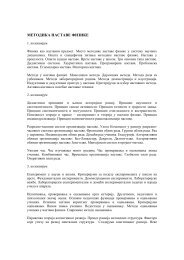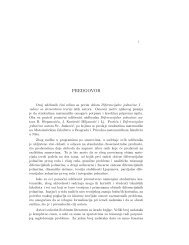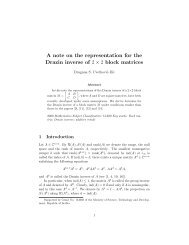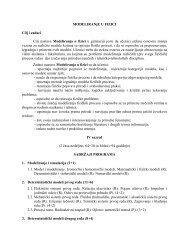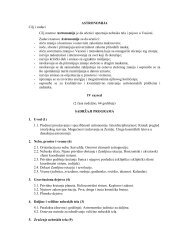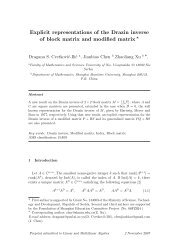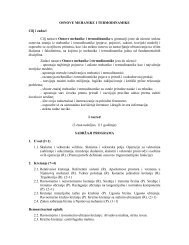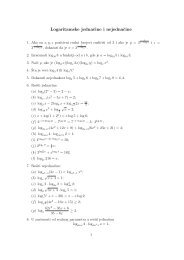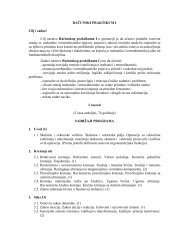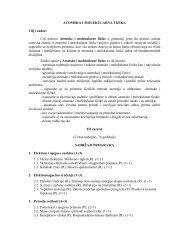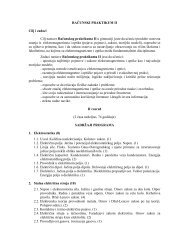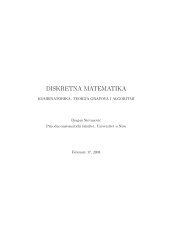The Hankel Transform of the Sum of Consecutive Generalized ...
The Hankel Transform of the Sum of Consecutive Generalized ...
The Hankel Transform of the Sum of Consecutive Generalized ...
You also want an ePaper? Increase the reach of your titles
YUMPU automatically turns print PDFs into web optimized ePapers that Google loves.
4Pro<strong>of</strong>. By previous notation, we can write(L + ξ)(L + 2 + ξ) n − (L − ξ)(L + 2 − ξ) nn∑ (= (L + ξ) n)n∑k (L + 2) n−k ξ k − (L − ξ) (−1) k( )nk (L + 2) n−k ξ k== 2n∑k=0k=0(1 − (−1)k )( nk)L(L + 2) n−k ξ k +[(n−1)/2]∑i=0⎧⎨= 2ξ⎩∑[(n−1)/2]i=0n∑k=0( n2i+1)L(L + 2) n−2i−1 ξ 2i+1 + 2( n2i+1)L(L + 2) n−2i−1 ξ 2i +k=0( )( )1 + (−1)k nk (L + 2) n−k ξ k+1[n/2]∑i=0[n/2]∑wherefrom immediately follows <strong>the</strong> expression for h n .✸k=0i=02. <strong>The</strong> generating function( n2i)(L + 2) n−2i ξ 2i+1⎫( n) ⎬2i (L + 2) n−2i ξ 2i ⎭ ,<strong>The</strong> Jacobi polynomials are given byP n (a,b) (x) = 1 n∑( )( )n + a n + b(x − 1) n−k (x + 1) k (a, b > −1).2 n k n − kAlso, <strong>the</strong>y can be written in <strong>the</strong> form( x − 1) nn∑( )( ) n + a n + b (P n (a,b)x+1(x) =2k n − kFrom <strong>the</strong> factL = x + 1x − 1we conclude thatandk=0⇔ x = L + 1L − 1T (2n, n; L) = (L − 1) n · P (0,0)nT (2n + 2, n; L) = (L − 1) n · P (2,0)nx−1) k.(x ≠ 1, L ≠ 1).<strong>The</strong> generating function G(x, t) for <strong>the</strong> Jacobi polynomials is∞∑G (a,b) (x, t) = P n (a,b) (x)t n 2 a+b=φ · (1 − t + φ) a · (1 + t + φ) , (13)bwheren=0(L+1L−1()L+1L−1).φ = φ(x, t) = √ 1 − 2xt + t 2 .



